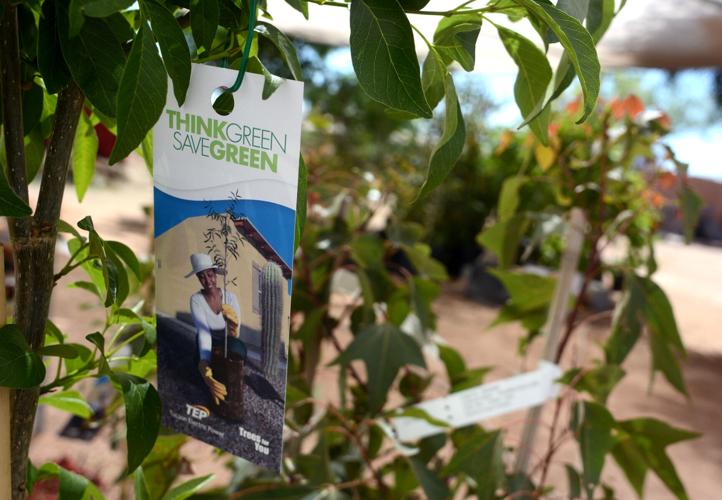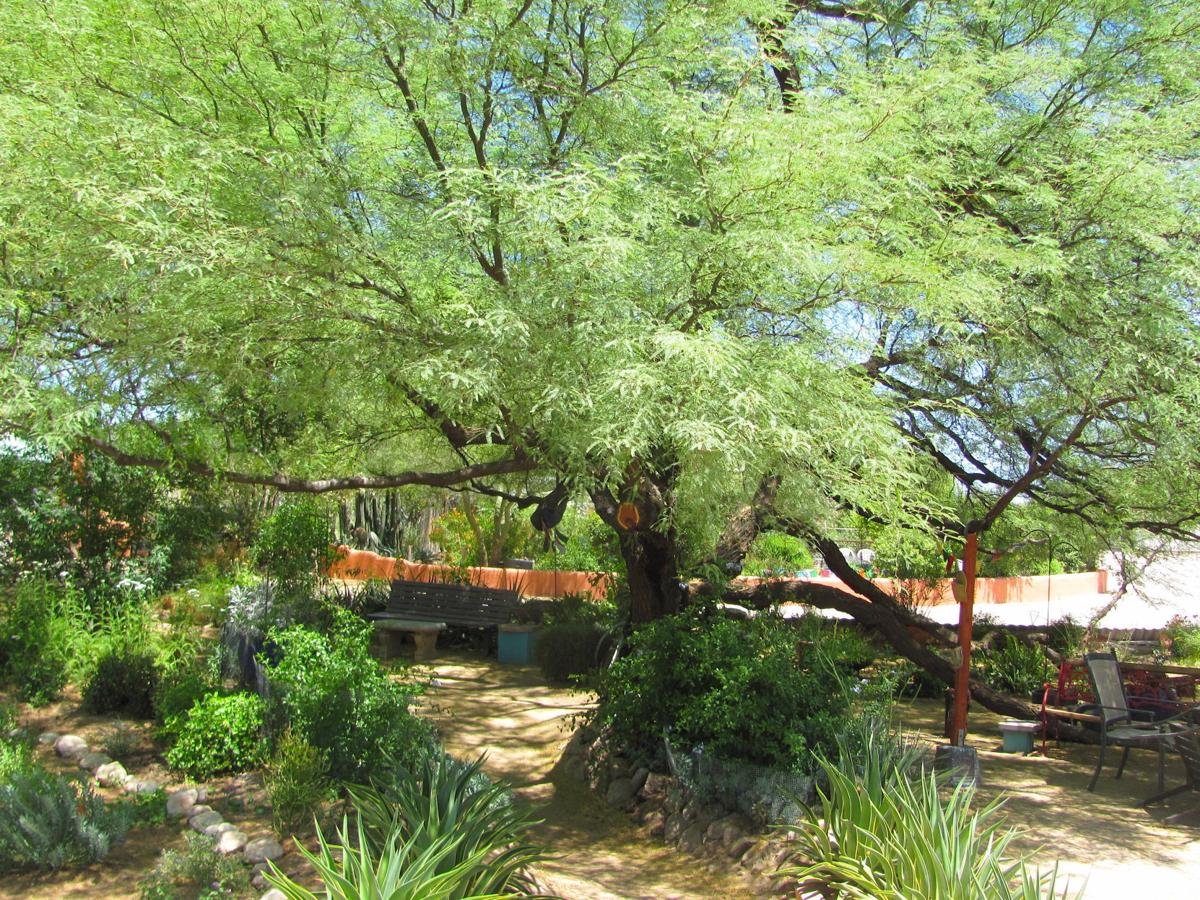How do you plant a tree? As the old joke goes, green end up. In Tucson, it’s a bit more complicated, and one big reason for that is caliche.
Caliche is a hardened soil layer common to desert soils. It is made up of calcium salts and minerals (mostly calcium carbonate) which are naturally present in the soil. In rainier places, minerals and salts in the soil are flushed through by rainfall. In drier climates like ours, over time these salts and minerals build up and form a hard layer (also called hardpan) anywhere from several inches to several feet thick.

Caliche is found as a hard layer in our desert soils. It can be a few inches to over a foot thick and can be found at different depths.
Anyone who’s tried to dig a hole by hand in Tucson knows what it’s like to try to dig through caliche — a pick or a caliche bar will be your best friend. For larger jobs, you may need to rent a jackhammer, or even a backhoe. It can help to soak the area before you dig; that can make breaking up the caliche a bit easier.
This hard layer makes it tough on new plants — particularly trees — because their roots won’t get the drainage or the room they need if you leave the caliche in place. In addition, if a tree’s roots end up growing shallow due to the caliche layer, the tree will be in danger of toppling once it gets taller. This would not only kill the tree, but potentially be a hazard to property and people. The University of Arizona Extension Office has a helpful handout on managing caliche.
Guidelines for tree and site selection in the Sonoran desert
- Select a native or desert-adapted tree. These trees will be more adapted to our desert soils and will cost you less in watering and maintenance. You will also want to select a healthy tree from the nursery; here are some guidelines on what to look for. If you want a mesquite or palo verde, check out this helpful guide from the University of Arizona.
- Select a good site for your tree. Avoid areas where it will cause a potential hazard, such as near power lines, near property lines, or close to your plumbing or septic system. This handout from the University of Arizona’s Extension office has some great tips, along with great examples of what not to do.
- Plant the water before you plant the tree. The Watershed Management Group has a great handout to help you ensure that your new tree has all the water it needs throughout its long life. After the initial two- to three-year establishment period, native trees can thrive on rainwater only.
Steps to planting a tree in the Tucson desert
There are steps you can take during planting to help ensure that your tree is an asset to your property and has healthy roots:
- Dig a hole that is slightly less deep than the container the tree is in, and three to five times as wide.
- To test drainage, fill the hole you just dug with water, let it drain, then fill and let it drain again. If the water takes longer than 24 hours to drain the second time, this could be due to caliche. Look for a caliche layer while digging; if you find it, you need to do one of two things:
- Dig out the caliche layer throughout the entire planting hole and discard the caliche fragments. This is a lot of work if done by hand, but if you have machinery — jackhammers or backhoes — it can go more quickly and will be worth it in the long run.
- Dig out a couple of drainage chimneys through the caliche layer next to the root ball (not under it) to help with drainage; fill these drainage holes with the same native soil you use for planting your tree.
- Remove any burlap or wires gently from around the root ball.
- When you put your tree in the hole, make sure the very top of the root ball is slightly above the grade of the rest of the hole. This is because you do not want any of the tree’s bark to be under the soil or the mulch layer.
- Back fill the hole with native soil; avoid using soil amendments with the exception of mulch or compost.
- Create a berm around the tree to hold water and allow it to infiltrate when you water your tree.
- Remove nursery stakes. These are unnecessary and are inadequate if the tree truly needs staking; use tree stakes and ties specifically for that purpose.
- Water your tree to a depth of 3 feet and then mulch with at least 2 to 3 inches of mulch. Keep the mulch a few inches away from the trunk to prevent rot.
Even native trees will need to be watered regularly for the first couple of years until they become established. Always water your tree out at the dripline (not at the trunk) to a depth of 3 feet to encourage wide and deep root growth. Use a soil probe to check how deep your watering is; this is just a pointed iron bar with a handle on one end. It’s much better to water a tree less frequently and deeply than to give it daily shallow waterings. Drip systems are best for these types of watering, but keep in mind that you will need to move the drip line and emitters outwards as the tree grows so you continue to water it at the dripline.
Where to find native trees in Tucson
Tucson Clean and Beautiful has a website called Trees for Tucson where you can order 3-foot tall trees for $25-$30. Not all the trees are native. If you’re a Trico Electric customer, you can get a discount on the Trees for Tucson site. If you are a Tucson Electric Power customer, you can participate in their Trees for You program and get discounted trees from local nurseries.

Trees sit ready to be picked up as part of Tucson Electric Power's Trees for You program at Civano Nursery, 5301 S. Houghton Road.
Other places to get native trees in Tucson include:
- Desert Survivors
- Spadefoot Nursery
- Civano Nursery
- Harlow Gardens
- Tohono Chul Retail Greenhouse
- Green Things Nursery
For more detailed information, check out these other resources:
- Planting Guidelines: Container Trees and Shrubs
- Choosing the best orange tree for your Tucson yard from the University of Arizona Extension office
- Arizona Tree Planting Guide
- Arizona Department of Forestry and Fire Management: Tree Selection and Care
- Arbor Day Foundation: How to plant your trees
- Watering Trees and Shrubs
- Landscape watering interactive guide







